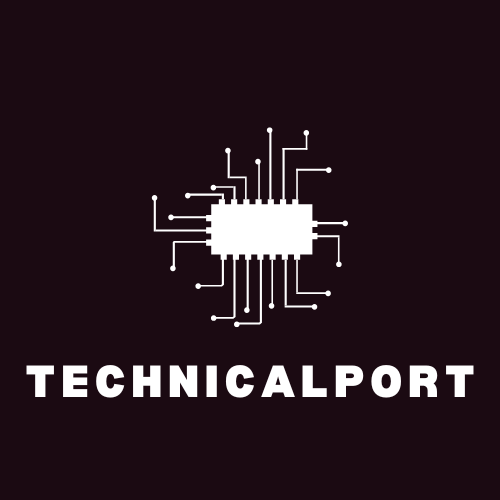What is Blockchain?
Blockchain is a decentralized and distributed digital ledger that is used to record transactions across many computers so that the record cannot be altered retroactively without the alteration of all subsequent blocks and the consensus of the network. This allows for the secure and transparent transfer of data and assets without the need for a central Blockchain: The future of secure and transparent transactionsauthority.
Each block in the chain contains a record of multiple transactions, and once a block is added to the chain, it cannot be altered. This creates a secure and immutable record of all transactions that have occurred on the network.
In addition, the decentralized nature of blockchain technology means that it is not controlled by any single entity, such as a government or financial institution. Instead, it is maintained by a network of computers that work together to validate and record transactions on the network.
The first and most well-known application of blockchain technology is the digital currency, Bitcoin. However, the technology has also been adopted for a wide range of other applications, such as supply chain management, voting, and the music industry.
Why blockchain is important?
Blockchain is important because it is a secure and transparent way to store and transfer data. In a blockchain, data is stored in blocks that are linked together in a chain, and each block contains a unique cryptographic signature. This makes it difficult for anyone to tamper with the data, and it also allows everyone with access to the blockchain to see the data that is stored on it.
Examples of Blockchain

Some examples of how blockchain technology is being used include:
- Digital currencies: The first and most well-known application of blockchain technology is the digital currency, Bitcoin. In this system, a decentralized network of computers uses blockchain technology to securely and transparently record the ownership and transfer of the digital currency.
- Supply chain management: Blockchain is being used in supply chain management to track the movement of goods and ensure their authenticity. This can help to improve efficiency and reduce the risk of fraud.
- Music industry: Blockchain is being used in the music industry to ensure that artists are fairly compensated for their work. This can help to address issues such as royalty payments and licensing.
- Financial industry: Blockchain has the potential to revolutionize the financial industry by providing secure and transparent methods of recording and verifying transactions. This could reduce the need for intermediaries such as banks, and make financial services more accessible to a wider range of people.
- Healthcare: Blockchain technology could be used in the healthcare industry to securely and transparently store and manage patient data. This could improve data security and facilitate the sharing of information among healthcare providers.
- Voting: Blockchain technology has the potential to revolutionize the voting process by providing a secure and transparent way to record and verify votes. This could help to improve the integrity and trustworthiness of elections.
- The blockchain can prevent Wiretapping is by using it to transmit encrypted messages between parties. Because the messages are encrypted and stored on the blockchain, they are difficult to intercept or tamper with.
TYPES OF BLOCKCHAIN
There are several different types of blockchain, including public, private, and consortium.
- A public blockchain is a decentralized network that anyone can access and participate in. This type of blockchain is often used for cryptocurrencies, such as Bitcoin and Ethereum.
- A private blockchain is a network that is maintained by a single organization and can only be accessed by approved users. This type of blockchain is often used by businesses to securely store and manage data.
- A consortium blockchain is a network that is maintained by a group of organizations, rather than a single organization. This type of blockchain allows multiple parties to work together and share data without giving any one party full control over the network.
There are also other variations of these types of blockchain, such as hybrid and sidechain blockchains.
ADVANTAGES OF BLOCKCHAIN
Some advantages of blockchain technology include:
- Security: Because each block in the chain contains a record of multiple transactions, and once a block is added to the chain, it cannot be altered, blockchain technology provides a secure and immutable record of all transactions that have occurred on the network. This makes it difficult for hackers to tamper with the data.
- Decentralization: The decentralized nature of blockchain technology means that it is not controlled by any single entity, such as a government or financial institution. Instead, it is maintained by a network of computers that work together to validate and record transactions on the network. This can help to increase transparency and reduce the risk of corruption.
- Efficiency: Blockchain technology has the potential to improve the efficiency of certain processes, such as the transfer of assets or the recording of transactions.This is because it allows for the secure and transparent transfer of data and assets without the need for intermediaries.
- Trust: The use of blockchain technology can help to build trust between parties by providing a secure and transparent way to record and verify transactions.
- Transparency: Because all transactions on a blockchain network are recorded and stored on multiple computers, they are transparent and open to inspection by anyone on the network. This can help to increase accountability and reduce the risk of fraud.
- Immutability: As mentioned above, once a block is added to the blockchain, it cannot be altered. This creates an immutable record of all transactions that have occurred on the network, which can be useful for auditing and compliance purposes.
- Automation: Some blockchain networks are designed to support smart contracts, which are self-executing contracts with the terms of the agreement between buyer and seller being directly written into lines of code. This can help to automate certain processes and reduce the need for intermediaries.
- Interoperability: Because blockchain technology is based on open standards, it can be integrated with other systems and technologies. This can help to facilitate the exchange of data and assets between different networks and systems.
DISADVANTAGES OF BLOCKCHAIN
Some disadvantages of blockchain technology include:
- Lack of regulation: Because blockchain technology is decentralized and not controlled by any single entity, it can be difficult to regulate. This can make it challenging to ensure that the technology is being used in a legal and ethical manner.
- Scalability: The decentralized nature of blockchain technology also means that it requires a large network of computers to maintain the network and validate transactions. This can make it difficult for the technology to scale to support a large number of users or transactions.
- Energy consumption: The high energy consumption required to maintain the network of computers that support blockchain technology has raised concerns about its sustainability. This could limit the long-term viability of the technology.
- Limited adoption: Despite its potential, the adoption of blockchain technology has been limited in many industries. This can make it difficult for organizations to realize the full benefits of the technology.
- Complexity: The technical nature of blockchain technology can make it difficult for non-technical users to understand and use. This can limit its accessibility and adoption.
- Lack of standardization: There are currently many different blockchain technologies and platforms available, each with their own unique features and capabilities. This can make it difficult for users to choose the right technology for their needs, and can also create interoperability challenges.
- Costs: Implementing and maintaining a blockchain network can be expensive. This can be a barrier to adoption for organizations with limited resources.
- Potential for misuse: Because blockchain technology allows for the anonymous transfer of assets, it has the potential to be used for illegal activities, such as money laundering or the funding of terrorism. This could tarnish the reputation of the technology and create additional challenges for regulators.
HOW BLOCKCHAIN WORKS
Here is a general overview of how blockchain technology works:
- A transaction is initiated by one party, and the details of the transaction are sent to the network of computers that maintain the blockchain.
- The network of computers verifies the transaction to ensure that it is valid and that the party initiating the transaction has the necessary permissions and assets to complete the transaction.
- Once the transaction is verified, it is added to a block, which is a collection of multiple transactions.
- The new block is then added to the existing chain of blocks, which contains a record of all previous transactions on the network.
- The new block is distributed to all the computers on the network, and the transaction is complete.
This process ensures that the record of transactions on the blockchain is secure and immutable, and that the transfer of data and assets is transparent and verifiable.
BLOCKCHAIN APPLICATIONS
There are many applications for blockchain technology, including:
- Cryptocurrencies: Blockchain is the technology that powers cryptocurrencies, such as Bitcoin and Ethereum. These digital currencies use blockchain to securely record and verify transactions.
- Supply chain management: Blockchain can be used to track the movement of goods and materials through a supply chain, allowing for greater transparency and efficiency.
- Voting systems: Blockchain could be used to create secure and transparent voting systems, potentially increasing trust in the electoral process.
- Medical records: Blockchain could be used to securely store and manage medical records, allowing for better coordination of care among different healthcare providers.
- Real estate: Blockchain could be used to manage and transfer property ownership, streamlining the process and reducing the need for intermediaries.
These are just a few examples of how blockchain can be used. The technology is still relatively new, so there is a lot of potential for further development and innovation in this area.
FUTURES SCOPE OF BLOCKCHAIN
The future of blockchain technology is difficult to predict, but it is likely that it will continue to be an important part of many industries. As the technology becomes more widely adopted and understood, there will likely be more applications for it, and it may become a key part of many systems and processes.
- In the financial industry, blockchain could be used to create more efficient and secure ways of managing and transferring money.
- In the supply chain industry, blockchain could be used to improve transparency and traceability, allowing companies to more easily track the movement of goods and materials.
- In the healthcare industry, blockchain could be used to securely store and manage patient records, improving coordination of care among different providers.
There is also potential for blockchain to be used in other areas, such as in voting systems and in the management of intellectual property. The future of blockchain is likely to be defined by continued innovation and the development of new uses for the technology.

